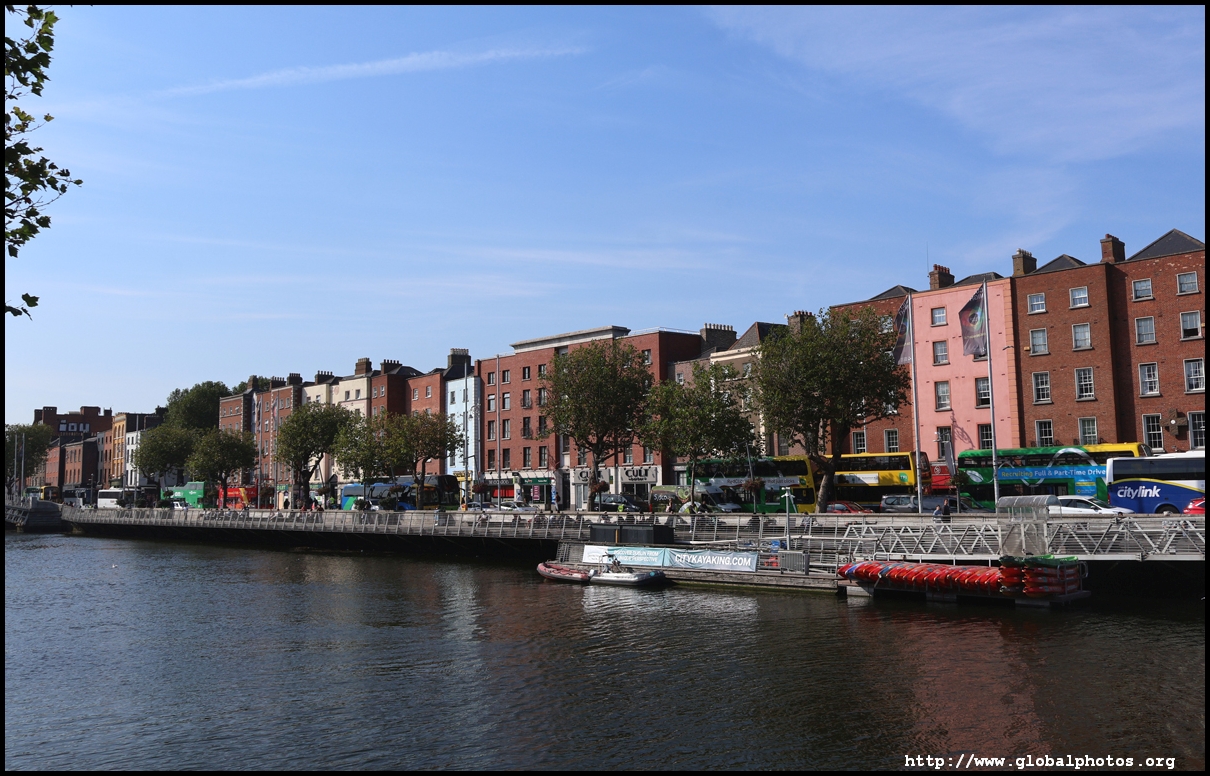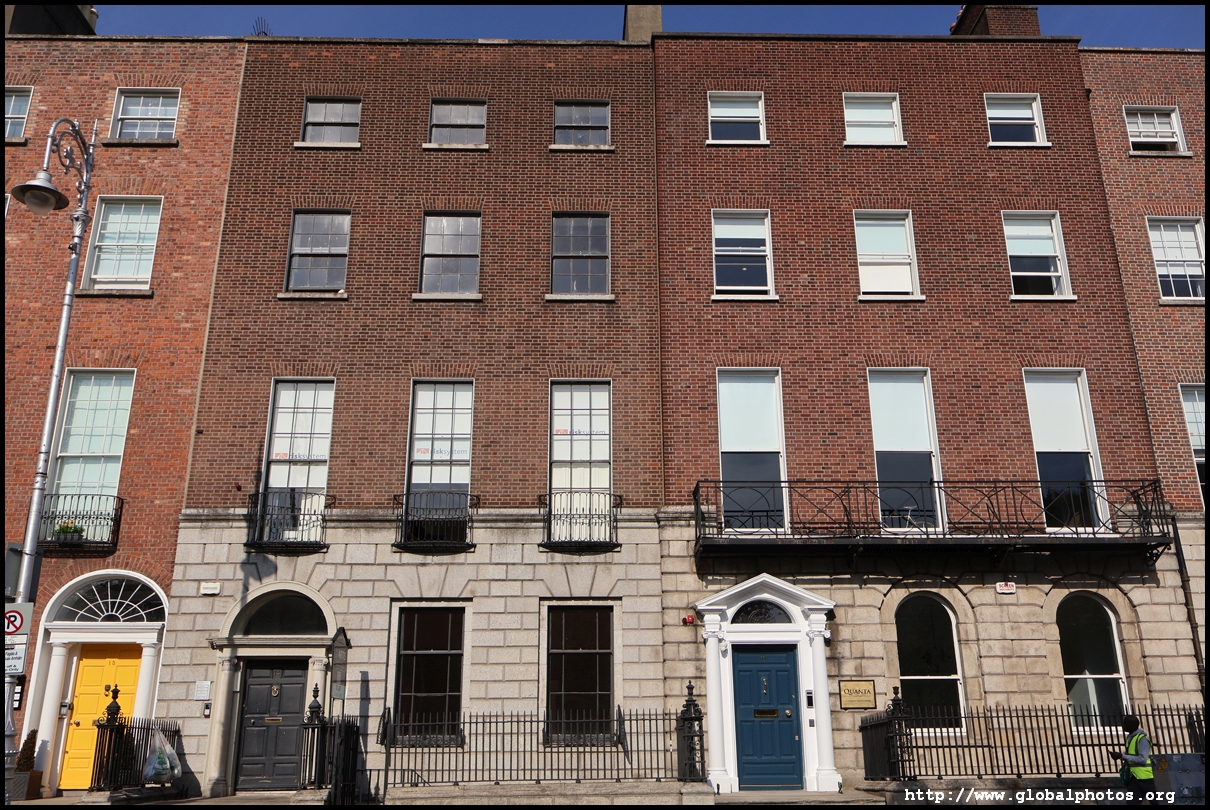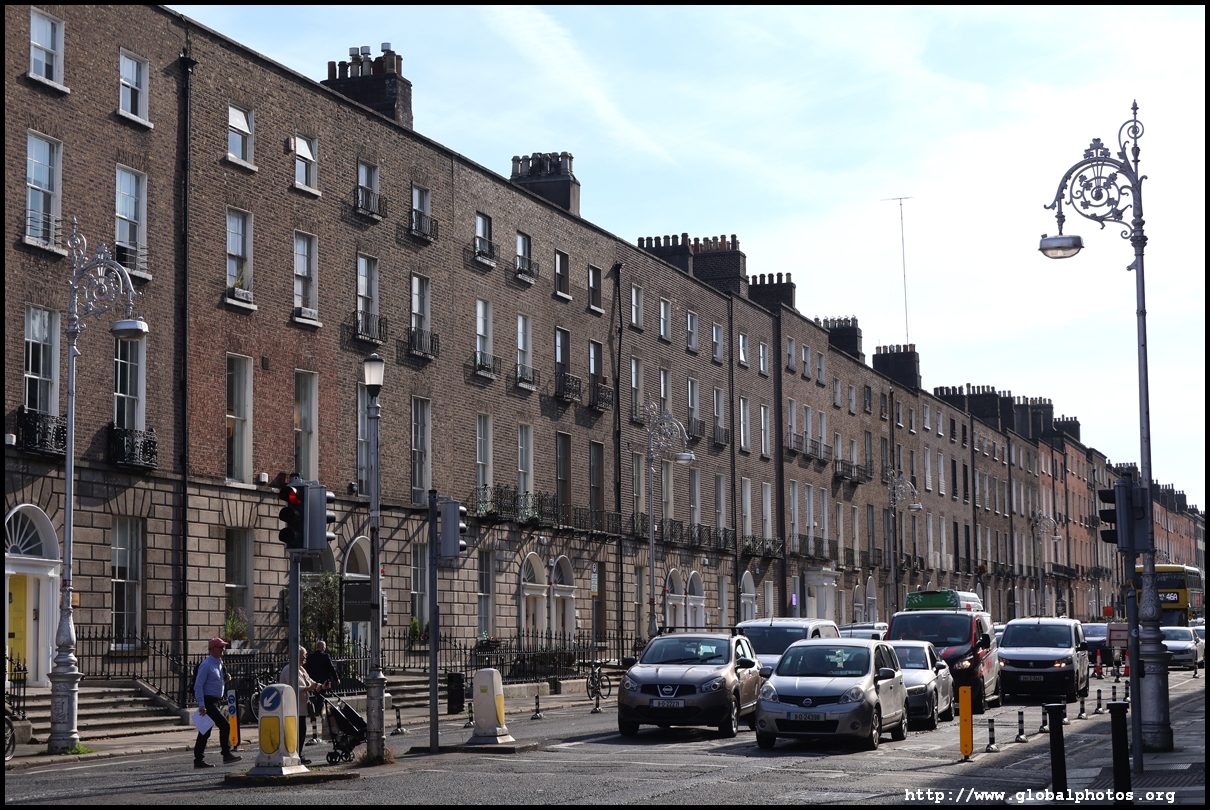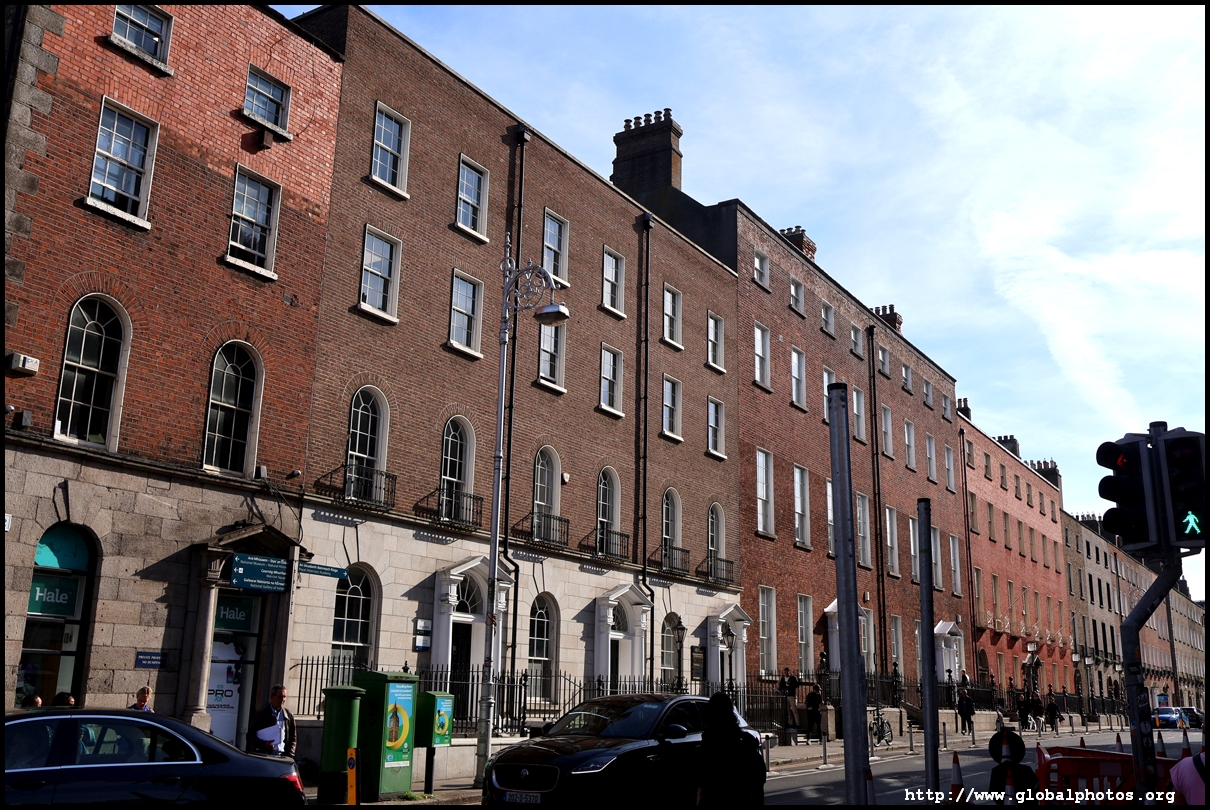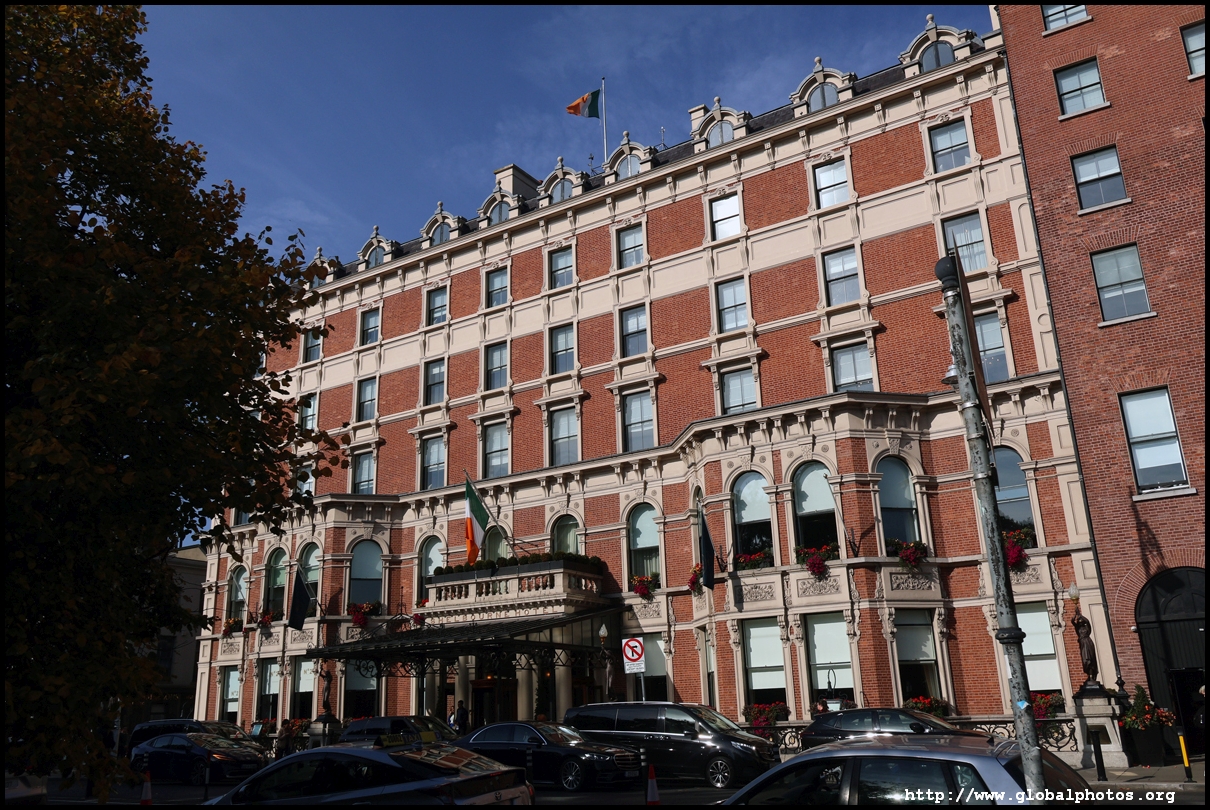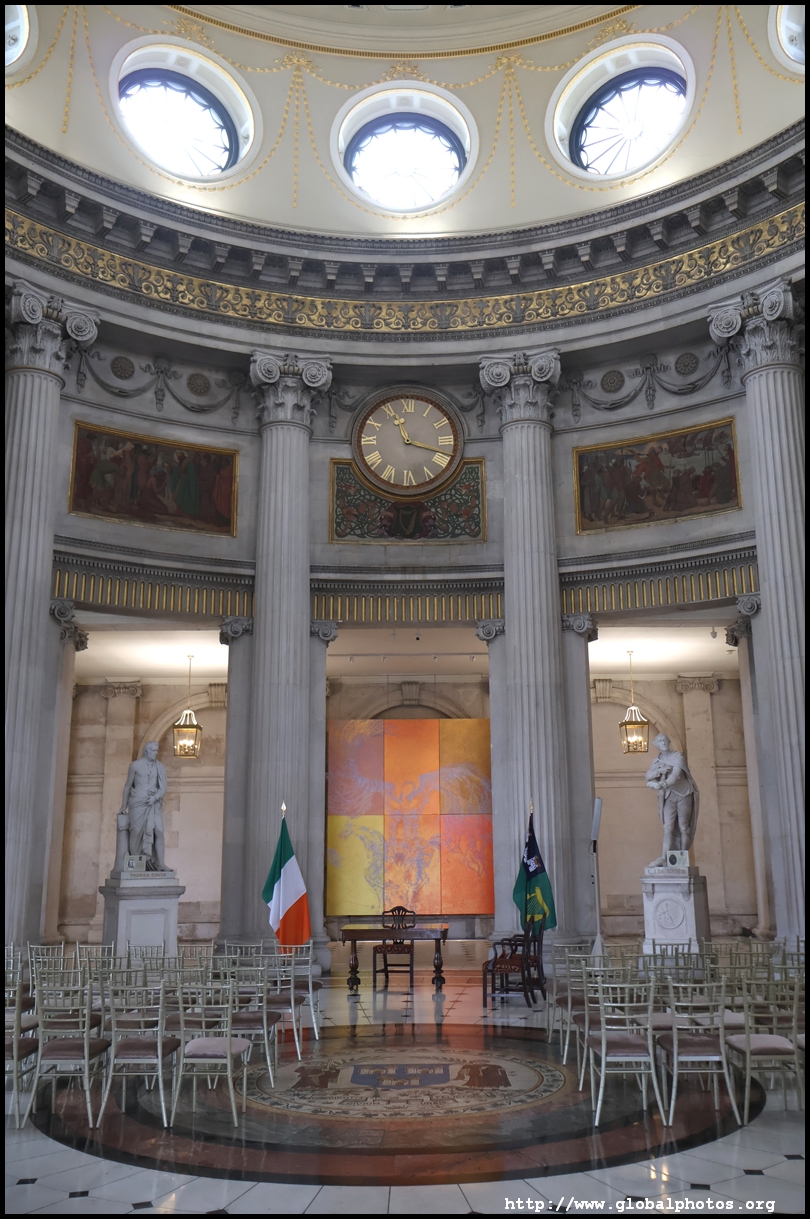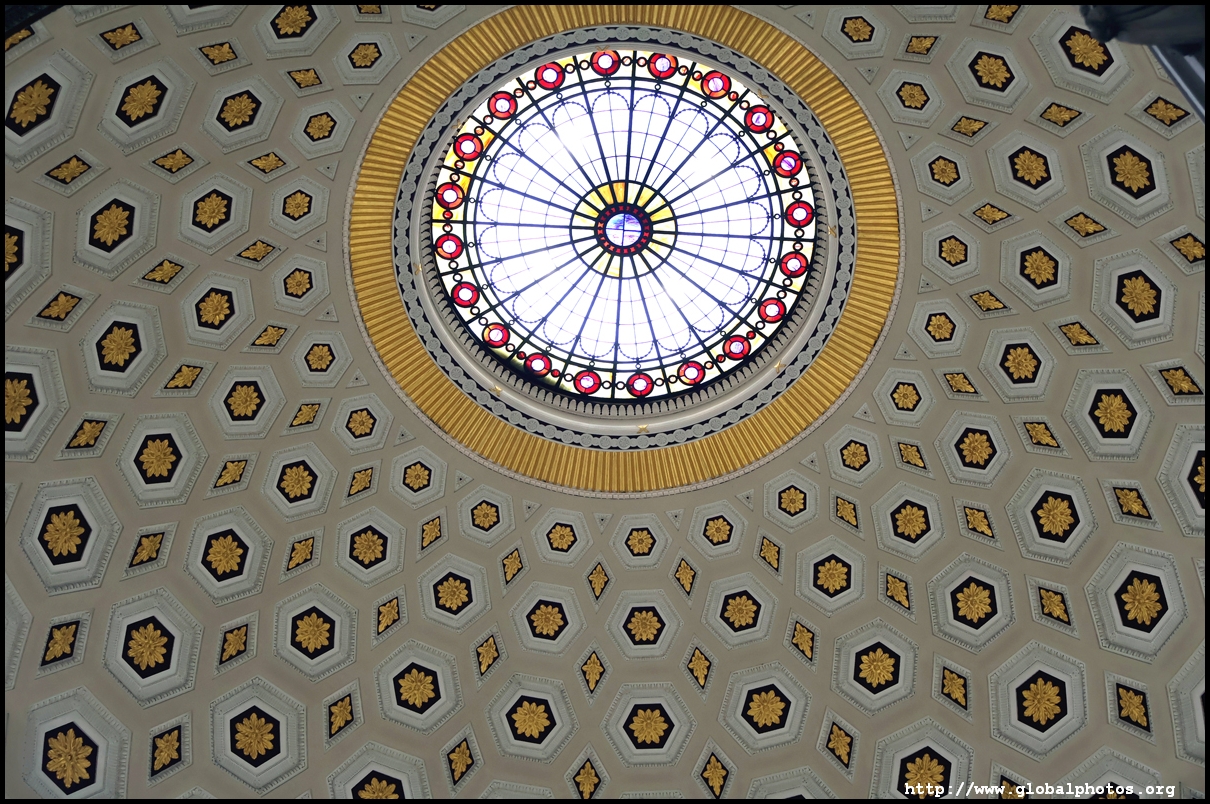Dublin Photo Gallery - Downtown Walk
The River Liffey makes its way down 32km from the Wicklow Mountains to the Irish Sea, passing through Dublin. It divides the working class north from the fashionable south side.
Ha'penny Bridge is the city's oldest pedestrian bridge across the Liffey. Built in 1816 and named after the half penny toll that was charged to 1919, the cast iron structure is now a popular tourist attraction and is surrounded by many more bridges nearby.
The Bank of Ireland was built in 1729 as the House of Parliament. After the Act of Union in 1801 when Ireland became a part of the United Kingdom, the Bank bought this building for 40,000 pounds, and the Commons chamber was demolished, but the House of Lords survived.
To the east and just past Trinity College, Merrion Square was meticulously planned in the mid-18th century with grand terrace houses. Many famous people once lived around here from politicians to Nobel Prize winners.
St. Stephen's Green is just a short walk away.
St. Stephen's Green opened in 1880 and has a small lake, beautiful flower displays, and Victorian bandstands that once served as a makeshift hospital.
Completed in 1779 next to Dublin Castle as the Royal Exchange, this was the place where people came to exchange Irish Punts and English Sterlings and traded various goods. All this came to an end when the Act of Union came into force and Dublin's economy faltered. City Council bought the building in 1852 and it now serves as City Hall.
| ||
Dublin Photo Gallery Main Page
Background logo is sourced from the Dublin City Council
To re-use these photos or notify of errors, please email me. Thank you.




